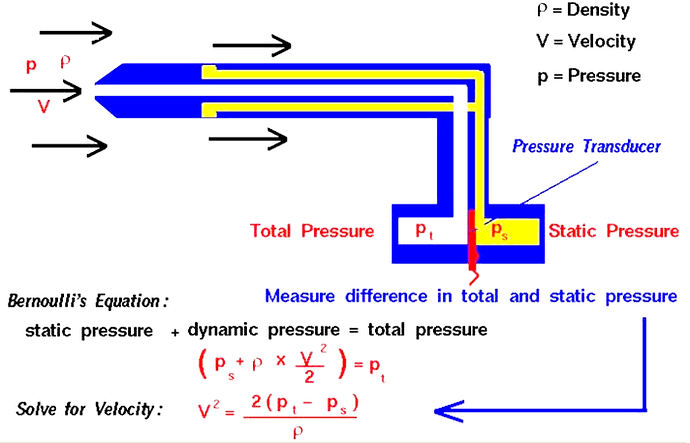A pitot tube is a pressure measurement instrument used to measure fluid flow velocity. The pitot tube was invented by the French engineer Henri Pitot in the early 18th century, and was modified to its modern form in the mid-19th century by French scientist Henry Darcy. It is widely used to determine the airspeed of an aircraft and to measure air and gas velocities in industrial applications.
The pitot tube is used to measure the local velocity at a given point in the flow stream; not the average velocity in the pipe or conduit. The basic pitot tube consists of a tube pointing directly into the fluid flow. As this tube contains fluid, a pressure can be measured; the moving fluid is brought to rest (stagnates) as there is no outlet to allow flow to continue.
This pressure is the stagnation pressure of the fluid, also known as the total pressure or (particularly in aviation) the pitot pressure. In industry, the velocities being measured are often those flowing in ducts and tubing where measurements by an anemometer would be difficult to obtain. In these kinds of measurements, the most practical instrument to use is the pitot tube.
The pitot tube can be inserted through a small hole in the duct with the pitot connected to a U-tube water gauge or some other differential pressure gauge (alnor) for determining the velocity inside the ducted wind tunnel. One use of this technique is to determine the amount of cooling that is being delivered to a room.
More info-
